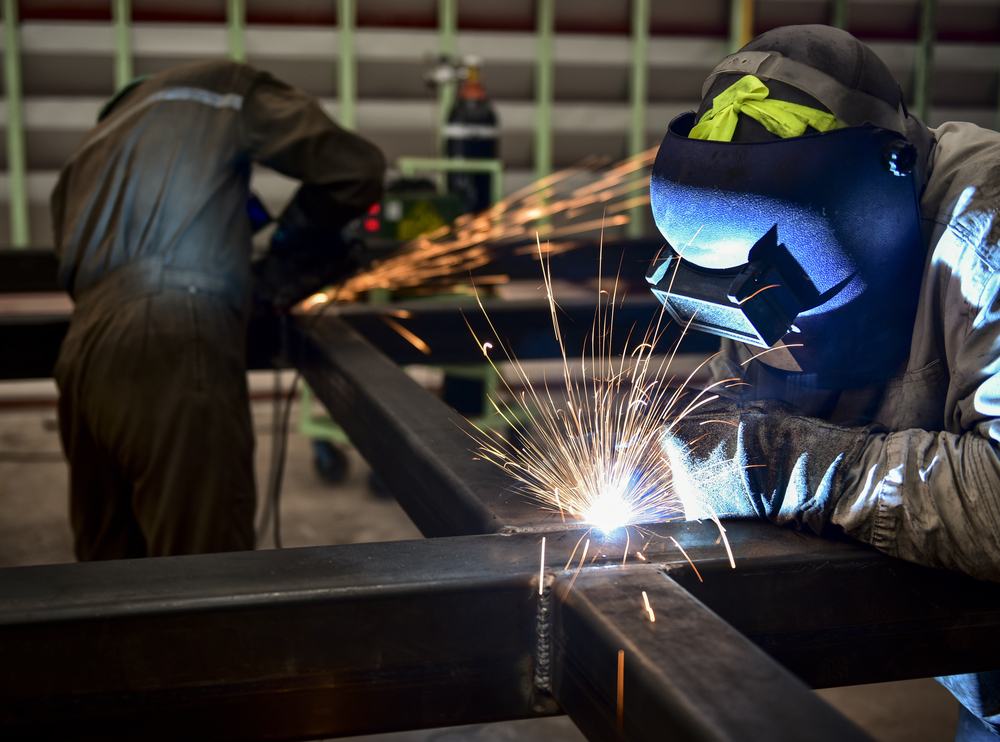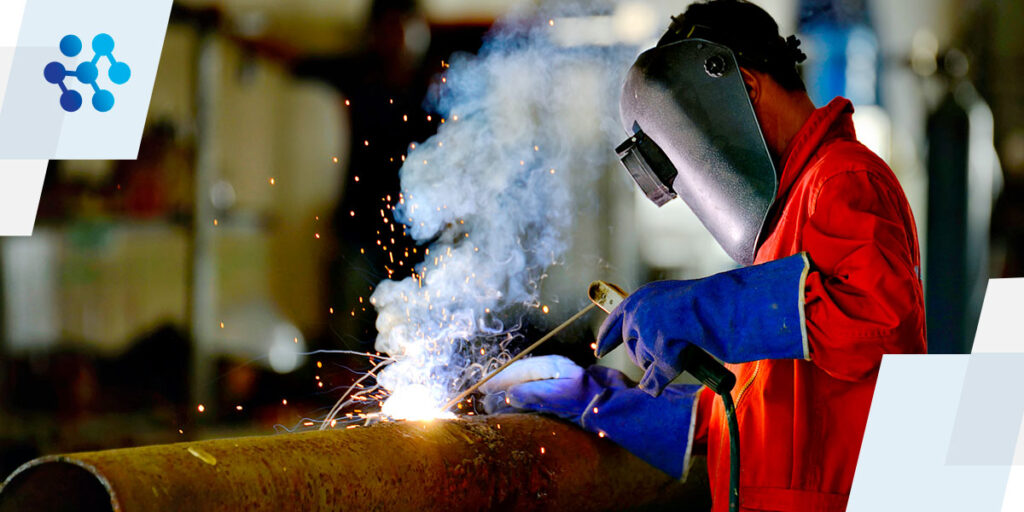Typical Welding Fixing Issues and Exactly How to Address Them Successfully
Welding fixings often come across a variety of concerns that can jeopardize the honesty of the final product. Common issues consist of poor penetration, porosity, and misalignment, to name a few. Each defect offers special difficulties that call for certain methods for resolution. Comprehending these problems is essential for welders intending to boost their end results and abilities. This discussion will check out these typical welding repair issues and efficient methods to address them.
Poor Penetration
Inadequate infiltration takes place when the weld steel fails to fully fuse with the base product, resulting in weak joints and prospective structural failings. This issue commonly stems from not enough warmth input, wrong electrode angle, or incorrect welding speed. Welders may experience inadequate penetration due to a mistake of the required criteria for a details product density or type. In addition, contamination on the base product's surface can hinder reliable bonding, worsening the issue. To address inadequate penetration, welders should guarantee ideal settings on their equipment and keep a tidy work surface area. Regular evaluation of welds is recommended to identify any type of shortages early, enabling timely modifications and the prevention of endangered architectural honesty in bonded assemblies.
Porosity
Porosity is an usual problem in bonded joints that materializes as small gas bubbles entraped within the weld steel. This defect can endanger the stability of the weld, causing lowered toughness and possible failing under tension. Montana Mobile Welding and Repair Belgrade Fabrication. Porosity generally develops from contamination, moisture, or incorrect welding strategies, which enable gases to get away right into the liquified weld swimming pool. To attend to porosity, welders need to ensure appropriate surface area preparation, maintain a clean working atmosphere, and make use of appropriate welding specifications. Furthermore, choosing the ideal filler material and shielding gas can mitigate gas entrapment. Routine assessment and screening of welds can aid determine porosity early, guaranteeing prompt restorative actions are taken, therefore maintaining the top quality and dependability of the bonded framework
Imbalance
Imbalance in welding can arise from numerous elements, including improper setup and thermal development. Recognizing the origin is essential for effective resolution. Several improvement methods are readily available to realign elements and ensure structural integrity.
Root causes of Misalignment
Welding misalignment frequently stems from a variety of underlying problems that can compromise architectural stability. One primary cause is inappropriate fit-up of parts prior to welding, which can result in voids and irregular surface areas. Variations in thermal development during the welding procedure can likewise result in distortion, specifically if the products being signed up with have different coefficients of development. In addition, inadequate clamping and fixturing may fall short to hold parts safely in position, leading to activity during welding. Inadequately conserved devices, consisting of welding makers and devices, may present variances in the weld bead, further contributing to misalignment. Ultimately, driver mistake, originating from inadequate training or experience, can likewise play a substantial duty in developing misaligned welds.
Correction Methods Readily Available
Resolving misalignment efficiently needs a combination of rehabilitative techniques customized to the details concerns handy. One typical method is making use of components or jigs to hold parts in the correct position during welding, making sure constant positioning. Furthermore, preheating the materials can help in reducing distortion and boost fit-up. For significant misalignment, mechanical adjustment techniques, such as making use of hydraulic jacks or clamps, can be utilized to deal with the placement prior to welding. Post-weld warm treatment might additionally be necessary to eliminate stresses triggered by misalignment. Mindful evaluation and change during the arrangement phase can prevent misalignment issues from coming to be significant troubles, promoting a smoother welding process and improving general architectural stability.
Distortion
Distortion is an usual obstacle in welding that can develop from different aspects, including uneven heating & cooling. Comprehending the root causes of distortion is necessary for applying reliable prevention methods. Addressing this problem not only enhances architectural stability however additionally enhances the overall quality of the weld.
Reasons for Distortion
When based on the intense warm of welding, materials usually go through modifications that can lead to distortion. This phenomenon mostly occurs from thermal expansion and tightening throughout the welding procedure. As the weld location warms up, the product increases; upon air conditioning, it contracts, which can create internal stresses. On top of that, unequal heating throughout a workpiece can intensify these stresses, resulting in warping or flexing. The kind of product additionally plays a considerable duty; steels with differing thermal conductivity and coefficients of expansion may respond in a different way, causing unforeseeable distortions. Inadequate joint layout and insufficient fixturing can add to misalignment during welding, enhancing the chance of distortion. Recognizing these causes is important for efficient welding repair and avoidance methods.
Prevention Techniques
Efficient prevention techniques for distortion during welding emphasis on regulating heat input and ensuring proper joint style. Keeping a regular warmth input assists to decrease thermal development and contraction, which can cause distortion. Making use of techniques such as preheating the work surface can likewise lower the temperature level gradient, promoting consistent home heating. In addition, selecting ideal joint layouts, such as T-joints or lap joints, can enhance security and minimize stress and anxiety focus. Applying correct fixturing to safeguard the work surfaces in position even more help in keeping placement during the welding process. Staggered welding series can disperse heat extra equally, protecting against local distortion. By using these strategies, welders can significantly reduce the likelihood of distortion and improve the overall quality of their More Info welds.
Breaking
Cracking is a typical problem run into in welding repair services, often arising from various factors such as inappropriate air conditioning rates, material choice, or insufficient joint prep work. The incident of fractures can considerably compromise the stability of the weld, resulting in potential failings during procedure. To resolve this problem, welders have to first evaluate the origin creates, making sure that products work and suitably selected for the particular application. Additionally, controlling the click for more info air conditioning rate during the welding process is essential; fast air conditioning can generate stress and anxiety and result in breaking. Proper joint style and preparation likewise contribute to decreasing the danger. Applying these methods can enhance weld high quality and sturdiness, inevitably decreasing the possibility of breaking in ended up weldments.

Incomplete Combination
A considerable problem in welding repair services is insufficient blend, which occurs when the weld metal does not properly bond with the base product or previous weld passes - Belgrade Welding. This problem can lead to weak points in the joint, potentially compromising the integrity of the bonded structure. Elements adding to insufficient combination include not enough warm input, incorrect welding strategy, and contamination of the surfaces being signed up with. To address this concern properly, welders should guarantee appropriate pre-weld cleaning and surface preparation, along with readjust their welding parameters to achieve ample penetration and blend. Normal evaluation throughout the welding procedure can also help identify insufficient fusion early, permitting prompt rehabilitative procedures to enhance the general high quality of the weld
Overheating
While welding repair services can enhance structural integrity, overheating presents a substantial challenge that can lead to material degradation. Extreme heat throughout welding can modify the mechanical buildings of metals, leading to reduced stamina, increased brittleness, and bending. This phenomenon is especially essential in high-stress applications where structural reliability is paramount. Determining overheating can include visual inspections for discoloration or distortion, along with checking temperature level during the welding procedure. To reduce the threats click here for more info associated with overheating, welders ought to utilize ideal strategies, such as controlling heat input, changing traveling speed, and using appropriate filler products. In addition, implementing pre- and post-weld warm treatments can assist restore product homes and boost the overall high quality of the fixing, guaranteeing long-lasting performance and safety and security.
Frequently Asked Inquiries
What Are the Usual Indications of a Welding Issue?

Exactly How Can I Check My Welds for High quality?
To examine welds for quality, one can utilize visual assessments, ultrasonic screening, and radiographic approaches. Each method ensures architectural integrity, identifies issues, and confirms adherence to defined requirements, inevitably improving the dependability of the bonded joints.
What Security Safety Measures Should I Take While Welding?
When welding, one ought to focus on safety by putting on appropriate personal protective equipment, guaranteeing proper air flow, protecting flammable products away, keeping a tidy workspace, and knowing environments to stop mishaps and injuries.
Can I Repair a Weld Without Redesigning the Entire Joint?
Repairing a weld without renovating the whole joint is possible, relying on the damages (Montana Mobile Welding and Repair Belgrade). Strategies such as grinding, including filler product, or making use of a welding process can effectively deal with specific flaws while maintaining the bordering structure
What Tools Are Important for Reliable Welding Fixes?
Vital tools for effective welding repair work include a welding equipment, wire brush, grinder, safety gear, clamps, and filler materials. Each device plays an essential function in guaranteeing quality and security throughout the repair work process. Porosity generally arises from contamination, dampness, or incorrect welding strategies, which permit gases to leave into the molten weld swimming pool. Badly conserved devices, consisting of welding equipments and tools, may present variances in the weld grain, more contributing to misalignment. When subjected to the intense warmth of welding, materials usually undergo modifications that can lead to distortion. Cracking is a common problem encountered in welding repair work, commonly resulting from numerous variables such as improper cooling rates, product selection, or insufficient joint preparation. A substantial issue in welding fixings is incomplete fusion, which happens when the weld metal does not appropriately bond with the base material or previous weld passes.
Comments on “Common problems explained and solved by Montana Mobile Welding and Repair Belgrade Fabrication”